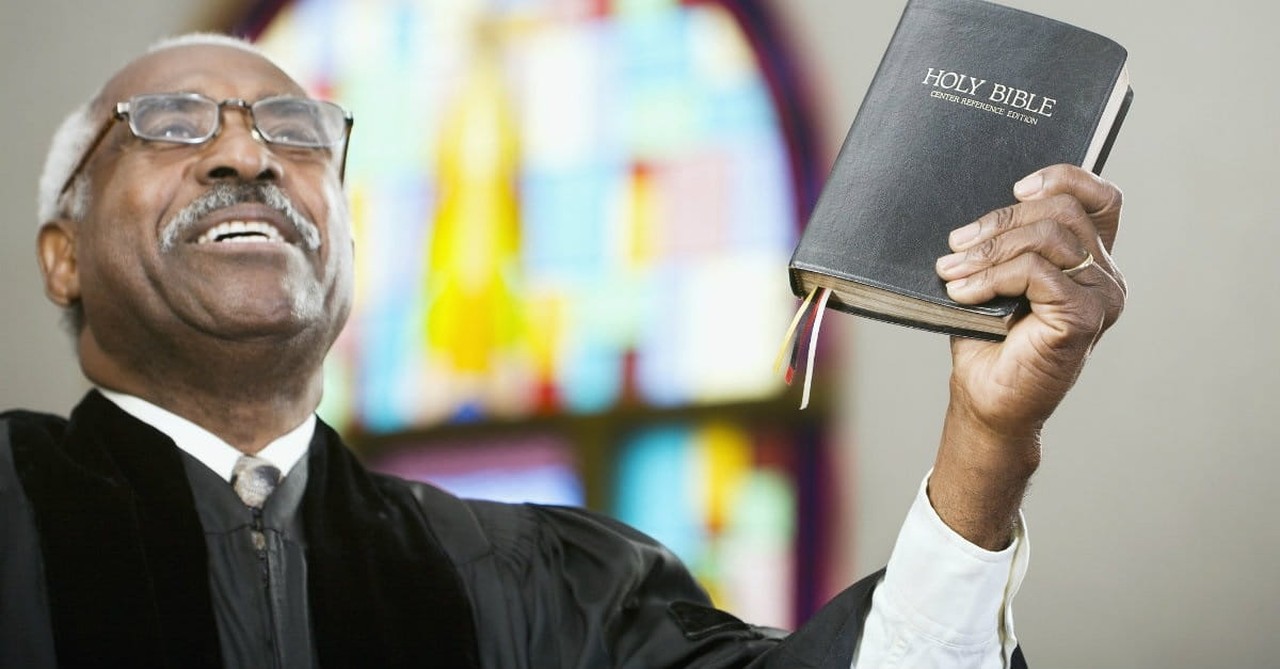
Let’s face it: church can be a strange place for visitors, for the first-timer and old-timer, the unbeliever and believer. While no church is perfect, some have adopted trends that are hard to ignore and easy to respond with an eye roll, trends that can come across as formulaic, robotic, phony, and, well . . . silly—and they are turning visitors away.
Since we all hail from different backgrounds and denominations, finding common ground can be difficult; thus making grace of utmost importance as we consider 10 church trends that turn visitors away.
Photo credit: ©Thinkstock/SIphotography
1. Church Membership

1. Church Membership
SLIDE 1 OF 10
I attended various Christian churches throughout my childhood and young adult years. I didn’t just attend these churches; I belonged to them, served at them, and learned from them. But I wasn’t introduced to the concept of official “church membership” until I moved to another state at the age of thirty-four.
For the first time in my life, church membership classes were all the rage. Not only that, but people were transferring their memberships from one church to another, flinging around phrases like “certificates of transfer” and “inactive vs. active memberships,” sounding more like they were joining—or un-joining—an exclusive club. And while there is no scriptural mandate for or against making church membership a requirement (after all, it really can be a good thing!), my first-time-visitor self found it off-putting.
Photo Credit: ©Thinkstock/Ingram Publishing
2. Satellite Campuses

2. Satellite Campuses
SLIDE 2 OF 10
Satellite campuses are certainly on trend: one pastor and one message, streamed live throughout multiple church campuses and venues. And there’s no arguing their effectiveness at reaching communities far and wide. But still, most people prefer having a traditional, flesh-and-blood pastor on stage -- one who can connect with his audience, shake hands at the door, and pat young’uns on the head.
Photo Credit: ©Thinkstock/Hill Street Studios
3. Rock Star Worship Teams

3. Rock Star Worship Teams
SLIDE 3 OF 10
My sister and I once had lunch near a table of rock stars. We saw tattoos and man buns, guy-liner and distressed skinny jeans, fedoras and pocket chains. But upon closer inspection, to see if Bono was present, I realized who they really were: my church’s worship team. We then rolled our eyes and had a good laugh.
Affectionately speaking, there’s something about ultra-hip worship leaders that borders on fantastic and absurd, leaving a church guest confused: Are they a bunch of one-hit-wonders turned worship leaders, still holding out for something big? Does the church require a certain “look” on stage, so as to appeal to millennials? Regardless of whether a worship team is in it for all the right reasons, their cool vibes could potentially turn many a non-20-something parishioner away.
Photo Credit: ©Thinkstock/tiero
4. Performance-based Worship

4. Performance-based Worship
SLIDE 4 OF 10
Laser beams circling about. Fog machines turned on low. Denim/black/denim/black patterned outfits. Frustrated looks between worship team members—you’re playing too loudly! Dramatic instrument pauses before the final round of the chorus. Vocal freestyles. Hopping around the stage.
This is no concert; rather, it’s an ushering-in of the presence of God. And no matter how genuine the worship team’s efforts may be, many people are going to find themselves standing there . . . just watching—and visiting elsewhere next Sunday.
Photo Credit: ©Unsplash/ChadKirchoff
5. Modern Church Lingo

5. Modern Church Lingo
SLIDE 5 OF 10
As the culture changes and shifts, so does the lingo—especially in churches. This could be problematic, should the language detract from the gospel message. But oftentimes it’s because a church is establishing their “brand” (see #6) or simply keeping things fresh. Many churches, for example, prefer “community” instead of “church,” “Christ follower” instead of “Christian,” “story” instead of “testimony,” and so on.
People new to church probably won’t know the difference between old and new lingo. But when veteran church-attendees hear a pastor say, “Out on the patio, let’s have an ongoing conversation about your personal journey,” instead of, “After service, let’s chat about your relationship with God,” they might wonder what he’s talking about (though they may fail to consider that “service” and “relationship with God” were also new terms at one point).
Photo Credit: ©Thinkstock
6. Church Branding

6. Church Branding
SLIDE 6 OF 10
The words “church” and “brand” don’t seem to go together; combining the two makes people uncomfortable. All week long folks are pitched products via clever and catchy marketing, and when it also bombards them at church, they might get turned-off.
But because we live in a media-driven age, branding is here to stay. A church’s brand goes beyond a simple logo. It’s the consistent expression of who they are and often includes color schemes, graphics, the use of language, and the occasional acronym for fun—and some people aren’t buying it. After all, when a pastor encourages his congregation to “head over to H.Y.P.E. tonight,” visitors won’t get the hype and will be left in the dark.
Photo Credit: ©Thinkstock/gnagel
7. Trying Too Hard to Be Trendy

7. Trying Too Hard to Be Trendy
SLIDE 7 OF 10
In the same way my kids accuse me of trying too hard to be funny, I think many churches try too hard to be trendy. No longer settling for weak coffee and pink donut boxes, many churches have created informal, Starbucks-esque spaces for gathering. While gourmet coffee is a church trend most of us are on board with, the trying-too-hard part happens when their coffee spaces get named: “Hebrews” or “WWJD Café” (What would Jesus Drink . . .)
Or some churches incorporate technology into their services—a lot of it—asking congregants to post church selfies on Instagram or download apps during the message, forcing a cool factor. And of course there are the fedora-donning worship leaders (see #3) and modern lingo (see #5), all of which can feel a little stale if the church is trying too hard to be trendy.
Photo Credit: ©Thinkstock
8. Overeager Greeters

8. Overeager Greeters
SLIDE 8 OF 10
I once volunteered as a church greeter—along with two-dozen others. They spaced us about 30 feet apart, to ensure each visitor received 25 welcomes by the time they got out of their car and into their seat, where they then had to greet at least three people around them.
Do visitors really want that much attention?
Having also been at the receiving end of multiple church welcomes, I can say with confidence—no they don’t. Throw in “Visitor Only” parking spots with an overeager greeter lurking nearby, and shy first-timers, who thought they could quietly sneak in, will sneak out the first chance they get.
Photo Credit: ©Thinkstock/kk5hy
9. Pastors Promoting Their Books

9. Pastors Promoting Their Books
SLIDE 9 OF 10
Nowadays it’s rare to find a pastor who isn’t also an author. It’s even more rare to find a pastor who doesn’t promote his books behind the pulpit. However well-intentioned he may be, he risks being viewed as a self-serving merchandise peddler. Keeping in mind that some people view churches as having their hands out all the time, a pastor should be sensitive to these things. Though it’s fair if he references his own material while digging deeper into his message, or should someone desire to dig deeper on his or her own.
Even if the pastor is beloved and trusted by his congregation, newbies have yet to make this connection, joking that they showed up to an author’s book tour instead of a church.
Photo Credit: ©Thinkstock
10. Programs, Teachings, and Traditions That Don't Follow the Pattern of the Gospel

10. Programs, Teachings, and Traditions That Don't Follow the Pattern of the Gospel
SLIDE 10 OF 10
The title of this last point speaks for itself. A prayer written by JD Greear perfectly summarizes the one trend every church should focus on -- the gospel message:
“In Christ, there is nothing I can do that would make you love me more, and nothing I have done that makes you love me less. Your presence and approval are all I need for everlasting joy. As you have been to me, so I will be to others. As I pray, I’ll measure your compassion by the cross and your power by the resurrection.”
Molly Parker cherishes her role as contributor and editor for Anchored Press Devotional Planners and for Sacred Holidays Bible studies. When Molly's not French-braiding hair or scolding her basset hound, she's eating cake, baking a cake, or thinking about cake, which is surprising considering she's worked in the fitness industry 25 years. Molly lives in Southern California with her husband and three children.
Photo Credit: ©Thinkstock/jdwphotos
Originally published June 23, 2019.







